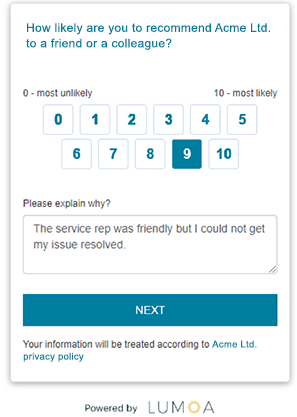Multiple Choice Survey Questions: Advantages and Disadvantages

Last updated on February 12, 2024
As every customer experience professional knows, surveys represent an invaluable tool for improving the customer experience, by understanding the strong and weak points about your business, and ultimately boosting revenues. Questions posed in surveys tend to take a range of different forms, with the most popular being multiple-choice questions. This guide will delve into not just the usage of multiple-choice questions but also highlight the integration of advanced customer experience strategies, such as the application of customer experience strategy templates and the thorough analysis of customer surveys for comprehensive feedback analysis.
However, although widely used, multiple-choice questions alone are not always able to produce the helpful data you need to make smart business decisions. This is where employing a customer experience strategy template comes into play, aiding in the structured analysis of survey responses to distill actionable insights. By complementing these with methodologies for analyzing customer feedback, such as text analysis and leveraging AI for customer experience management, businesses can gain a deeper understanding of customer sentiments and behaviors.
In this handy guide, we’ll share tips and best practices on how to use multiple-choice questions in surveys to get actionable customer insights. We’ll explore how integrating these with a customer experience strategy template can enhance the survey analysis process, ensuring that the insights gathered are aligned with broader business objectives. This strategic approach not only enhances the quality of data collected but also ensures that the insights generated are directly actionable, guiding strategic decisions to improve the customer experience effectively.
What are multiple-choice questions?
Multiple-choice questions are questions constructed in such a way that respondents are presented with several answer options to choose from. Most of the time, these types of survey questions allow users to select either a single answer or multiple answers.


What are the advantages of posing multiple-choice questions in surveys?
Why are multiple-choice questions common to use in surveys? The reason why this particular form of questions is so popular is that they are straightforward, and it doesn’t require much effort from the respondent to answer the questions. Other advantages include:
1. Results that are simple to analyze
Multiple-choice questions allow you to organize and make sense of responses fairly quickly and efficiently. For certain problems and lines of inquiry, collecting quantitative data is a simple way to collect basic demographic information about customers. Dedicated customer experience analytics will make the process even smoother.
2. Easy to complete on mobile devices
According to recent estimates, around one in five people complete surveys on mobile devices such as cell phones and tablets. Such devices tend not to come with a traditional keyboard, meaning it is rather easy for respondents to answer multiple-choice questions using a touch screen.

What are the disadvantages of multiple-choice questions?
Although multiple-choice questions have their advantages, there are some significant limitations to be aware of. Disadvantages of using multiple choice questions include:
1. Manipulate the respondent to answer in a certain way
This is one of the most common problems with multiple-choice questions. When a question is presented with a defined set of answers, respondents may be forced to answer in a way they otherwise would not have.
The survey designer will provide options that he or she thinks are the most relevant ones for the question. However, in practice, those answers may not be the most obvious choice for the respondent. The respondent might have something else in mind. Since the respondent is limited to a set of predefined answers, the respondent may even skip the question or choose an answer that might not represent the truth.
2. Focused on collecting quantitative data
Multiple-choice questions are designed to produce quantitative data. This can be limiting if you want to find out about a customer’s personal experiences with your company. Only collecting quantitative data will just give you an overview of how the responses are allocated, and you will not have any insights into why the result looks like it does.
3. Time-consuming to design
Although multiple-choice questions are fast to process, they can take up your precious time. This is because coming up with effective questions is trickier than it sounds, and it can be difficult to ensure you have covered every possible corresponding answer.
How to use multiple choice questions in surveys
Multiple-choice questions are great to use in surveys if you use them in the right way. Here are a few tips to get you started:
1. Choose a type of multiple-choice question that works for you
The two main varieties of multiple-choice questions are multiple-answer and single-answer. The former allows respondents to select a few answers to one question, while the latter only allows them to select one.
Multiple-answer questions can help find solutions to problems that could have several contributing factors. For example, if you want to find out demographic information and your customers could fit themselves under several categories related to their age or background, allowing for multiple answers will give you a better overall picture of the type of customers you attract.
Single-answer questions, on the other hand, are suitable for binary answers (such as yes/no), nominal scales, or questions with ratings. Put simply, they are best used for questions with only one possible answer for each participant.

For example, if you want to evaluate the efficiency of a service or product, you could ask respondents to rank its efficiency on a scale of one to five. Alternatively, you could use NPS which asks respondents to rate how likely they are to recommend goods and services to a friend. Other typical examples of single-answer questions are, CSAT or CES.
2. Always add an open-text question
If you are going to use multiple-choice questions in your survey, you should always add an open-text question. By including an open-text question option, you allow customers to comment and motivate their answers.
The open-text question will provide you with valuable qualitative data, that you can use to improve your product or services. This type of feedback is called open-ended feedback and is incredibly useful for gaining customer insight into issues you may not even have considered. This option will prove useful even if you think that the question can only be answered a few ways – you may not have thought of everything.
How not to use multiple choice questions in surveys
It is very easy to make mistakes when designing surveys that include multiple-choice questions. Here are a few tips to prevent you from falling into common traps:
1. Do not make things too complicated
Respondents are more likely to answer your survey if the process is quick and simple. You should avoid making surveys with 10+ different questions just to make sure that you are getting feedback on everything you want to cover.
Instead, you should only use one multiple-choice question in your survey, such as NPS, CES, or CSAT, and complement it with an open-text question. By keeping the survey short and simple, the user experience will be better and you’re able to increase the response rates.
2. Try not to offer ambiguous answers
Sometimes, multiple-choice questions can be unintentionally confusing. For example, if you ask the respondent to indicate which age range they fall into and you provide answers that overlap (e.g. 0-15; 15-30; 30+), people who fall into two of the categories will not know which answer to select.
Start your survey journey today
As you can see, creating surveys that produce useful information is an art. It’s easy to get carried away by including more and more questions in a survey. It’s important to remember what the goal of the survey is as well as finding the right balance between questions and user-friendliness. Utilizing a customer experience platform can streamline this process by providing the tools necessary to design effective surveys that engage customers and provide actionable insights. Additionally, conducting a customer experience audit can help identify areas of improvement and ensure that the survey content is aligned with the overall customer experience strategy.
After all, it is vital that your customers can respond and have the option to include their thoughts and opinions. At Lumoa, a customer feedback analytics platform, we always recommend creating surveys that include:
- 1 multiple choice question
- 1 open-text question
It doesn’t have to be more complicated than that!
If you want to read more about surveying then check out the article: How to create better surveys: your business depends on it.
